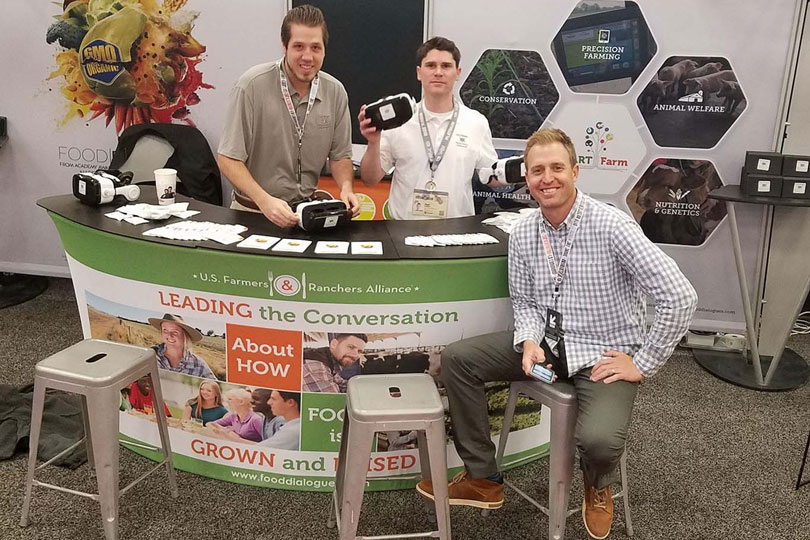By Julie Tomascik
Editor
Downtown Austin is a hub of food and culture. During South by Southwest (SXSW), it’s even more so as food, technology, music and film groups from around the world bring their culture to Austin’s city streets.
A group of farmers and ranchers, including West Texas farmer Jeremy Brown, joined the crowd at the U.S. Farmers & Ranchers Alliance’s (USFRA) booth. They wanted to strike up a conversation about agriculture in the trade show and in panel discussions.
“I think this is a great place for us to be,” Brown said. “Here, there is a lot of disconnect between consumers and agriculture, and there’s a lot of misconceptions about what we do on our farms and ranches.”
From technology to animal care, the group of farmers and ranchers discussed topics consumers could relate to and find interest in.
“This was a great opportunity for us to engage with consumers about where their food comes from and how we do things on our farms and ranches,” said Brown, who grows wheat, rye, peanuts, grain sorghum, sesame and organic and conventional cotton.
Brown’s story is unique. He traded in his blue jeans for a suit and went to work for a U.S. Congressman after college. The time away from the farm opened his eyes to the criticism and misconceptions of agriculture—a way of life he cherished.
But when his roots deep in West Texas called him home, he embraced changes and technology—looking to improve his farm and crops with each season. And he took his advocacy efforts to another level when he was selected as a Face of Farming and Ranching for USFRA in 2016.
He’s traveled to many venues and different states to talk about agriculture, but SXSW is an interesting experience, Brown said.
“It’s been interesting, but I’ve enjoyed it. Here, I’ve been interacting with people from all over the world. I’ve been talking about agriculture and about how I do things on my farm,” he said. “We know people have questions, and we want to answer them to the best of our ability.”
At the USFRA booth, Brown was joined by farmers from New Mexico and Virginia to share experiences from their parts of the nation.
They handed out information so the folks they visited with could do more research if they wanted.
“We wanted to give them something to take home,” he said. “Sometimes they have more questions or want a place to go to for more information, and we’d like to be that resource.”

